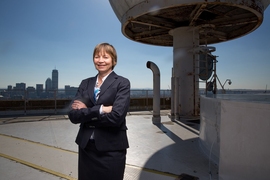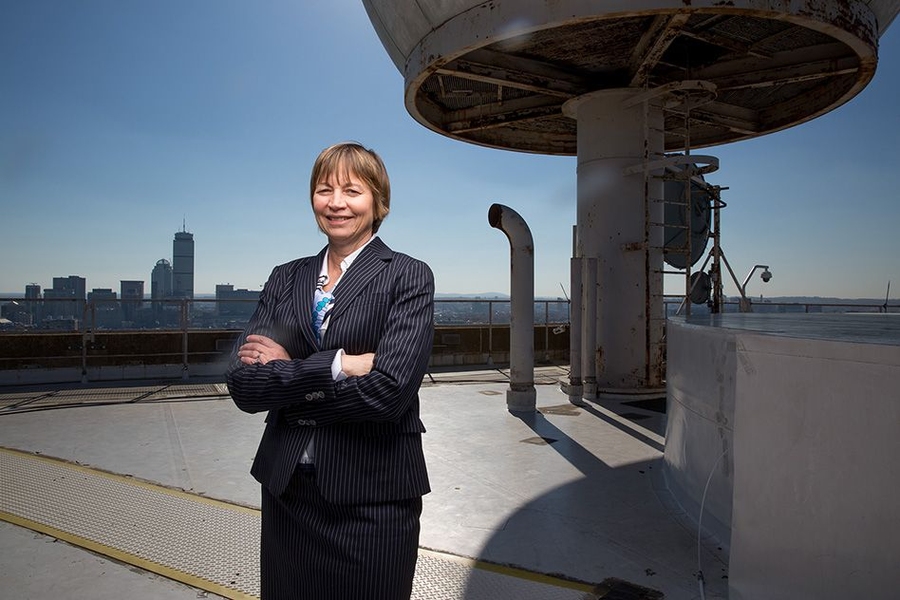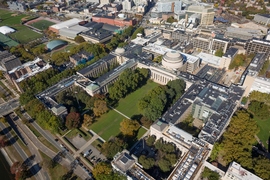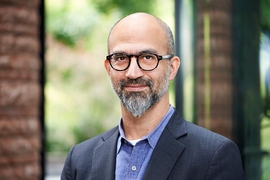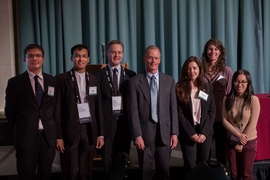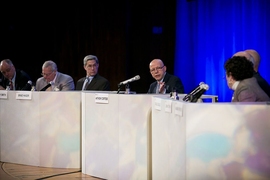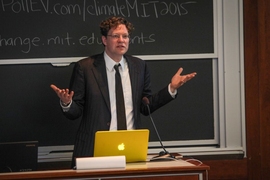On Oct. 21, at the conclusion of a year-and-a-half process of discussion, consultation, and gathering of ideas, President L. Rafael Reif announced a five-year plan the Institute will pursue to address the challenges of global climate change. Maria Zuber, vice president for research and the E.A. Griswold Professor of Geophysics, was a leader of the initiative, which sought input from all parts of the MIT community. MIT News sat down with Zuber to discuss how the new action plan can help MIT address one of the great issues of our time.
Q: The new action plan includes a wide swath of goals and many kinds of research. What are some of the steps that you envision over the next few years to help MIT make progress toward these goals?
A: This is a five-year plan, and obviously climate change is not going to be solved in five years. We made it five years to give the plan time to achieve results, so we can gauge its success and assess our options. We spent a year and a half talking about this, receiving a great deal of input, and it’s time to stop talking and start doing. MIT is at its best when people roll up their sleeves and get to work.
The plan includes research, education, outreach, and the development of a more sustainable campus. Some activities are beginning immediately. For others, we need to raise funds to execute them. We are now assembling an implementation strategy with short-term and longer-term goals. A core element of the plan is that academia, industry, and government need to work together to solve this daunting problem.
There’s room for additional ambition in the plan. Some members of our community are pressing for MIT to be carbon-neutral by 2040. That is a wonderful aspiration. The reason we haven’t agreed to that is because we don’t have a path to get there at this point, and we can’t make such a promise to the MIT community until we know we can deliver. Given our community’s expanding ambitions in research and education, the campus is growing — MIT.nano being a case in point.
What we did say is we’ll reduce our carbon footprint by at least 32 percent by 2030, even in light of our expanding campus, and we will continually revise our commitment as we merge our efforts to address campus deferred maintenance and decrease greenhouse gas emissions. That process is under way now. We intend to do considerably better than we promised.
Carbon neutrality is a tremendously challenging goal. To get there, our community and our partners need to invent new solutions. But it’s the kind of bold challenge that can galvanize action.
Q: A price on carbon emissions seems to be a key element of reducing climate change risks. How can MIT contribute in meaningful ways toward bringing this about?
A: The need for a price on carbon was a consensus view of our community. And we intend to be active in bringing society to carbon pricing. But at the same time, if we want to call for a global carbon price or a national carbon price, we had better take care of our own campus.
At MIT we’re good at studying things, including ourselves, and we must begin by turning our campus into a more sustainable entity. These efforts will be implemented by the Office of Sustainability and the Department of Facilities in coordination with the Environmental Solutions Initiative.
We’ll begin by collecting a lot of data about our activities and setting goals. What are the things we’re not measuring that we ought to be? There will be many opportunities for student participation in data collection, beyond the dorms and living groups. We need to think about all the inputs and outputs of our campus system, and how they affect our carbon footprint. Making MIT a living laboratory for sustainability is a thrilling prospect for many members of community.
We will institute shadow carbon pricing — so that MIT considers carbon emissions as a factor in making purchases. That process has already started. That will influence capital expenditures here on campus. We also decided to consider some aspects of end-user carbon pricing — to evaluate the effect of emissions on certain aspects of our daily lives.
This would be much too complicated to implement for the world, but on campus, it’s a great learning opportunity. It causes you to think: What decisions can we make to alter our behavior to further reduce the carbon footprint of the campus? If and when promising results come out of that, we can consider implementation. It’s a research project, because we don’t know at the outset what will be most efficacious.
Q: One specific proposal in the new plan is the creation of eight new centers within the MIT Energy Initiative. How will these help to push the development of needed advances in energy technology?
A: We feel the same urgency that our students have articulated so beautifully about the need to accelerate progress toward a low-carbon global energy system. Of course MIT is already doing world-class research on this topic, but efforts have been mostly individual faculty projects. Both we and our industry partners have come to realize that the climate change problem is so complex and so challenging that we need groups working together on topics that are critical to progress. We need participation from players with expertise on the challenges in both the developed and developing world.
We’ve chosen to consider a portfolio of low-carbon solutions with near-term and longer-term potential impacts. That is the basis for the eight centers of activity. Some areas, like solar power, already have considerable effort under way, and we will expand on that. And there are others that that are far less mature that will require major technology advances to be realized, like advanced nuclear power, and even fusion power.
One or more of these may emerge as key solutions, and if that’s the case, then we may make a decision to narrow the focus.
We need to be humble. We need to listen to people who think we’re not doing enough. Toward that end, I have been meeting regularly with Fossil Free MIT students, sometimes for a couple of hours at a gulp; I’m trying to keep the lines of communication open and find as much common ground as possible.
We’re only one institution, and the world is a big place. We need to work with partners worldwide and we need to collaborate across our campus.
Our hope is for every member of our community to get excited about some part of the plan. I am hoping for a great deal of student involvement, and I know that’s a central goal for John Fernandez, too, as he takes on the leadership of the Environmental Solutions Initiative. I would so love for us to really make a difference here. This is our moment to lead.
